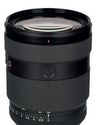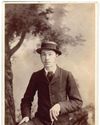
Street photographer. Documentary filmmaker. Painter. Fiction filmmaker. Abstract photographer. Writer. Fashion photographer. Illustrator. Maker of books. Designer of exhibitions. To have made original and influential work in just one of these fields would have been enough to secure William Klein a place in any canon of the visual arts. To have succeeded in them all, on his own terms, and to have sustained a creative output for over six decades, is remarkable.
For a long time, Klein was known as either a fashion photographer or a street photographer or a filmmaker. That is to say, different audiences knew and valued different aspects of his work. Only in recent years has the scope of his achievements begun to be recognised. Versatility runs against the idea that artistic significance is based on single themes and recurring preoccupations. Today, however, it is accepted that the artists who ranged freely and avoided specialism are key to understanding the culture of the past century.
In Yes, we have a chronology of Klein’s often breathless development, allowing the connections between his different practices to become apparent. Almost from the start, he was proceeding on several fronts at once. When he was shooting his now- celebrated street photography in New York in 1954-55, he was also breaking new ground in fashion photography at Vogue magazine, while exploring abstraction in the darkroom and on canvas. Switching between media, between cultural frameworks, between studio and street, the similarities were as stark as the differences. The switches became even more important when Klein turned to filmmaking. The visual energy of his documentary and fiction films evolved directly out of still photography.
This story is from the March 28, 2023 edition of Amateur Photographer.
Start your 7-day Magzter GOLD free trial to access thousands of curated premium stories, and 9,000+ magazines and newspapers.
Already a subscriber ? Sign In
This story is from the March 28, 2023 edition of Amateur Photographer.
Start your 7-day Magzter GOLD free trial to access thousands of curated premium stories, and 9,000+ magazines and newspapers.
Already a subscriber? Sign In

Calling The Shots: A Queer History of Photography
Offering an unprecedented view of photographic history through a queer lens, this is a wonderful and powerful book, says

Large-aperture standard zoom, too
SONY has also revealed a new premium standard zoom, the FE 28-70mm F2 GM.

Super-fast, high-res Sony Alpha Ai II
SONY has announced its new professional full-frame flagship camera, the Alpha A1 II.

39 awesome accessories
Our round-up of the best accessories we've used and reviewed this year, along with some old favourites. There's something here for every budget, starting from just £7, including tripods, bags, filters and much more

Such a thing as society
This autumn sees the launch of a major new book and exhibition devoted to examining the multiplicities of photography during 1980s Britain. Peter Dench finds out more

Join Club
The sociable Canvey Island Photographic Club is keen to grow its in-person meet ups

Capturing flight
Winners and finalists of Bird Photographer of the Year share their tips for success with Hollie Latham Hucker

140 years of change
AP has become the world’s oldest surviving consumer photo magazine because we have moved with the times, says Nigel Atherton

Preserving history in platinum
A deep dive into the meticulous art of platinum printing, and the collaboration between the Royal Geographical Society and Salto Ulbeek. Mike Crawford explores how they brought historical photographs to life with enduring beauty and precision

Life in the past lane
What was life like for an amateur photographer in 1884? John Wade takes a trip back in time